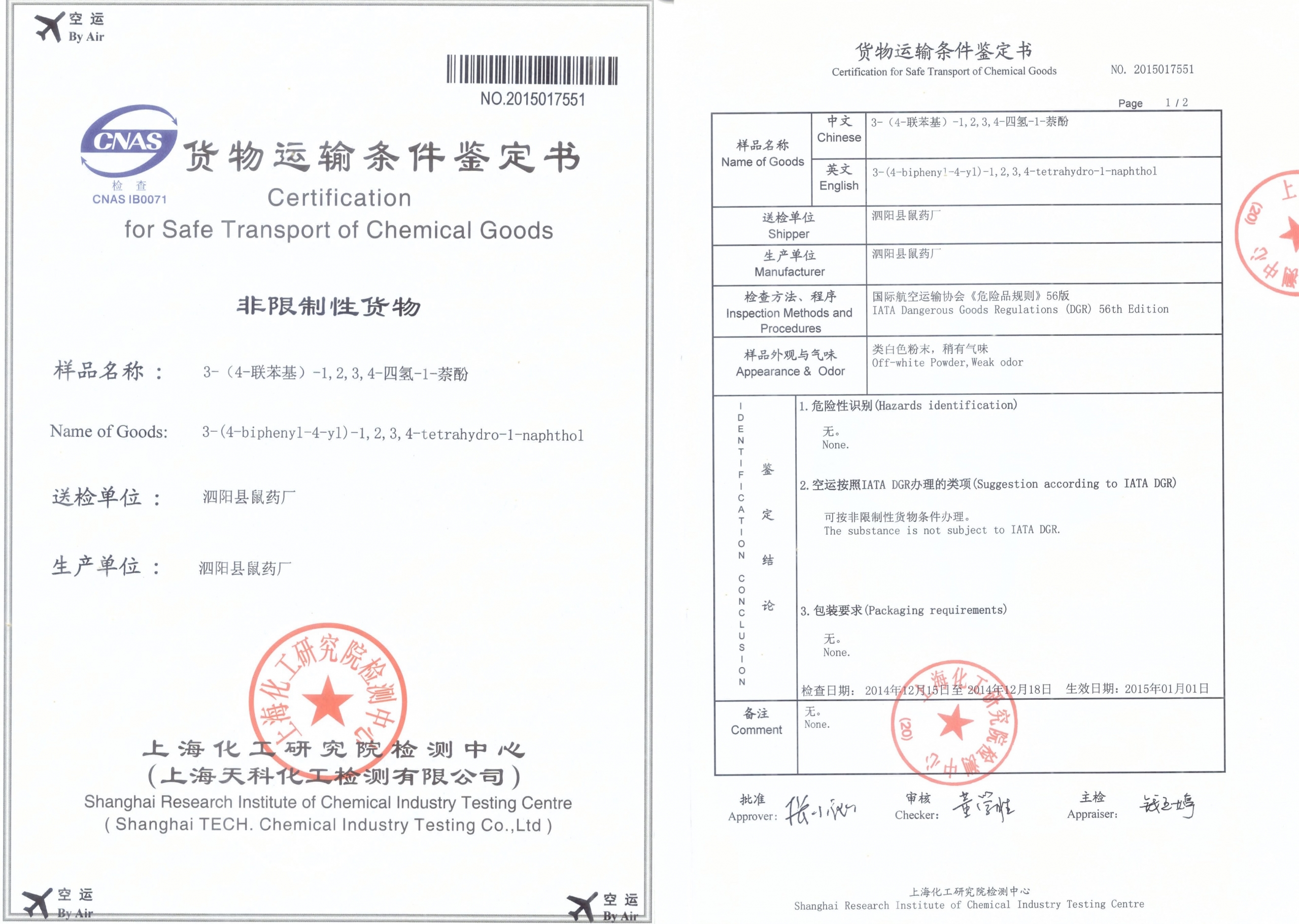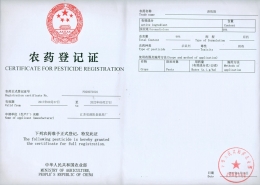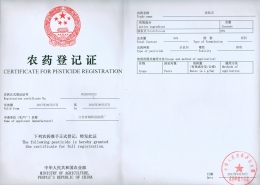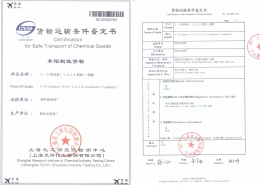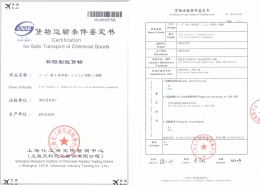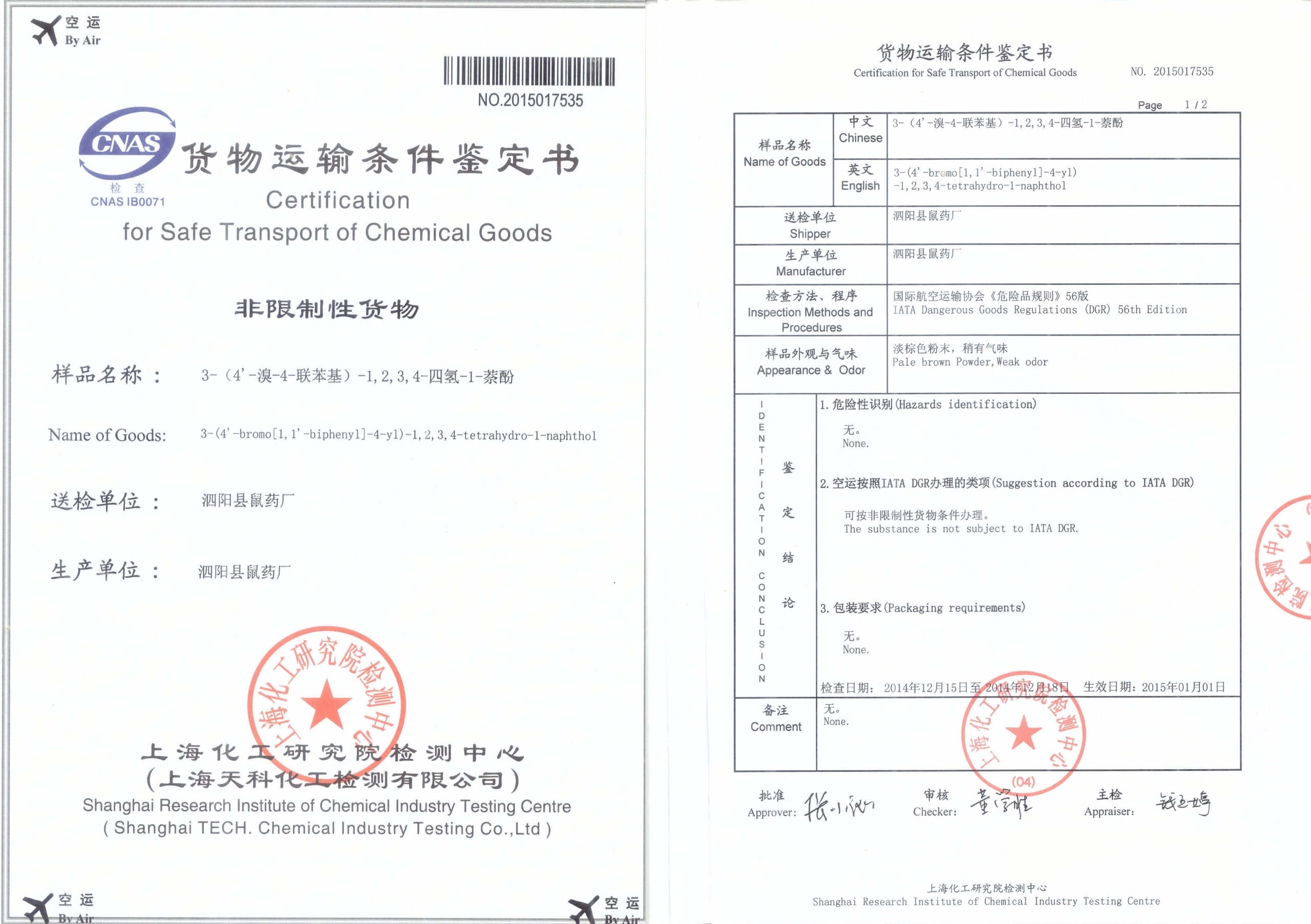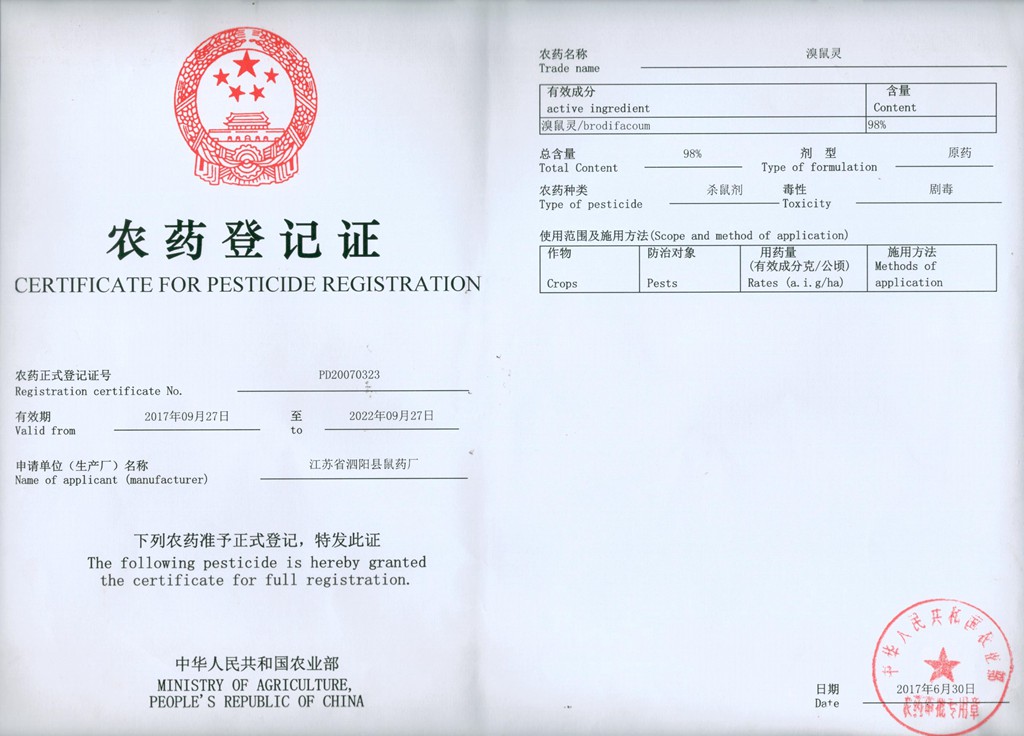CAS No.: 56181-66-9 | C22H20O | Intermediate of Difenacoum
- Difenacoum Stage 6 (before coumarin)
Mol. Formula: C22H20O
CAS No.: 56181-66-9
EC No.: 260-034-9
Purity in stock: ≥ 99.5%, 99.7% (2 bathes)
- IUPAC name: 3-[1,1′-biphenyl]-4-yl-1,2,3,4-tetrahydro-1-naphthol
China Reg. name: 3-[1,1′-biphenyl]-4-yl-1,2,3,4-tetrahydro-1-naphthol
China’s Regulatory: MEP Directive No. 7/2010
New Substances Registration No.: 2011009/MEP
Registration Date at China MEP: 12. JAN, 2011
Since the 2005 National Industrial Policy, China has terminated any new industrial projects involving rodenticides, including Difenacoum.
- According to the China National Industrial Guidelines, the “Decision of the State Council on Promulgating the ‘Interim Provisions on Promoting Industrial Structure Adjustment’ for Implementation” that came into effect on December 2, 2005, and its detailed guidance document, “Directory for Guiding Industry Restructuring (2005)” (now updated to the 2024 edition), commonly referred to as the “National Industrial Policy,” the production of new highly toxic pesticides, including all rodenticide active ingredients, is prohibited in China, and no new enterprises are permitted to enter the industry.
- When the factory expansion project was completed and put into operation in 2004, our Difenacoum industrial production shared a production line with Brodifacoum. Both products underwent environmental assessments by the competent environmental protection bureau and safety production assessments by the work safety supervision department. In fact, the synthesis steps for Difenacoum and Brodifacoum are almost identical, with the primary distinction being that Difenacoum does not utilize bromine (4-bromobiphenyl) in the initial stage.
- The registration of new active ingredient pesticides with the Ministry of Agriculture is a time-consuming process, requiring evaluations and assessments in areas such as chemistry, efficacy, residues, toxicology, and environmental impact. Unfortunately, by the time the National Industrial Policy was introduced in December 2005, we had not managed to complete the process. This new rodenticide production project was completely terminated in China.
- As a result, over the past period, we have produced and stored some intermediates, which are solely intended for export.
Rodenticide intermediates registered under China REACH
(C22H20O, the last intermediate before 4-hydroxycoumarin synthesis)
- The “Measures for Environmental Administration of New Chemical Substances” (Ministry of Environmental Protection (MEP) Decree No.7,) was issued in Jan 2010 and went into effect on Oct 15, 2010. This regulation is similar to EU REACH and is also known as ‘‘Chinese REACH.’’
https://www.gov.cn/gongbao/content/2010/content_1671246.htm - “The Measures for the Environmental Management Registration of New Chemical Substances” (Decree No. 11 of the Ministry of Ecology and Environment of China) was issued on February 17, 2020, replacing Decree No. 7 of the former Ministry of Environmental Protection.
https://www.mee.gov.cn/xxgk2018/xxgk/xxgk02/202005/t20200507_777913.html
- On January 12, 2011, the Difenacoum intermediate (C22H20O) produced by Siyang Rodenticide Factory completed registration in accordance with China’s REACH regulations of 2010.
- Additionally, all production at our factory has been halted since 2019. The production and storage of all current stock products are in full compliance with all relevant Chinese laws and regulations.
Stock
(available)
- Regarding the stock of Difenacoum intermediate 6: Unlike Brodifacoum, global usage of Difencam remains very low. As a result, we have exported very small quantities in the past, and as of 2025, we still have a certain amount of stock remaining.
- Regarding quality: In the production process of Difenacoum, its stability is far lower than that of Brodifacoum, making it more difficult to handle. We currently have only two batches of Difenacoum intermediates, and surprisingly, their quality exceeds that of our Brodifacoum intermediates. The purity is approximately 0.2% higher, ranging from 99.5% to 99.7%. We believe it can absolutely serve as an analytical reference grade.

